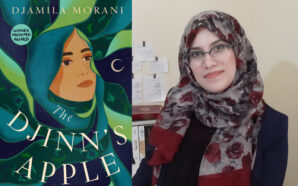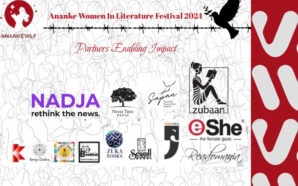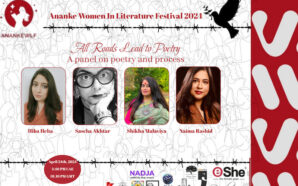You are a writer and an illustrator— two wonderfully complementary professions. Do tell us about your journey, the challenges, and what has kept you going.
I’ve been a bookworm since I was a child, very much the ‘bringing a book to a wedding and sitting in the corner finishing it’ type of kid. In school I always loved English literature because it gave me an excuse to stockpile more books and learn how to read and talk about them intelligently. I also come from a family of artists, both my sisters work in visual arts and my Nana and father used to paint and make posters when they were young. My mother is very interested in creating beautiful spaces and my house is filled with lovely objects she’s curated. This is a long winded way of saying I don’t think I could have avoided art if I tried (and I did briefly try by pursuing an English degree instead of an art one for my undergraduate degree)!
After graduating I got a job at The Last Word Books. Owned by Aysha Raja, it’s a lovingly curated bookstore that always has the most stunning books in stock. There I really learned to appreciate book design and the illustrations that went into complementing stories and I found myself itching to do the same with Pakistani narratives. I decided to pursue an MFA in Illustration and went to the Maryland Institute College of Art as a Fulbright scholar in 2018. That experience was incredibly eye-opening and I learned how to approach my art-making from a perspective of play and experimentation. It led me to try out new mediums, many of which I have incorporated in my art, like embroidery and animation.
Graduating in the pandemic meant that my cohort and I missed out on having a thesis show. Coming back to Pakistan in the middle of the lockdown in 2020 also made it difficult for me to go out and build a community as soon as I got back. Thank goodness for the internet though! I worked on freelance projects including the cover of Usman Tanveer Malik’s Midnight Doorways: Fables from Pakistan and now I teach at an art university, working specifically on teaching students to create illustrations for narratives and to help them work on sequential narratives as well!
Your artwork as shown on your social media accounts show a variety of themes, colors and almost a stunning hypnotic effect, with careful attention to detail. Do you find it easier to express yourself in words or through art?
These days I’m working more on my art. I often start with a loose concept that I illustrate but there have been times that I have written stories based on my illustrations after they’re done. I attended a non-fiction writing course organized by Sadia Khatri, a writer from Karachi, that got me in the habit of journaling. I’m not the best at keeping up with it but there are some things I’ve written that I’m interested in turning into illustrations/animations in the future.
How do you overcome an artistic block?
For me it becomes a matter of switching gears to let my brain rest in one way or another. That could mean changing to a different medium if I feel I’ve spent too long in one form of creating. Embroidery has become a great way for me to really zero in and focus on a piece for a longer time and that repetitive motion of pulling thread for hours a day lets my mind wander and think
About what I want to do next in a relaxing way. Reading is also a great way for me to recalibrate my brain. I’m reading essays on art these days as well as comics/graphic novels I own to help prepare for the course I teach as well (I’m afraid I’m a classic case of ‘buying more books than I can read in a year’ but I always maintain I’ll get to them all eventually!)
How influential do you think art has been in influencing social change?
I think art can be very influential in creating conversations around difficult subjects. Some of the most moving things I have read have stayed with me because of the intimate connection a reader has with a book and have affected how I move through the world. The same goes for visual art. I keep going back to the work of Zarina Hashmi whose prints on language and the concept of home make up the bulk of my inspiration folders whenever I look to start a personal project. Other work like the embroidery work of Esther Nisenthal Krinitz that detailed her escape from Nazis and subsequent journey to America moved me deeply when I first saw them in Baltimore. Art can absolutely be used to highlight difficult subjects whether it’s hidden in an allegorical plot of a novel or looks deceptively simple in the form of naive art.
There’s a lot also to be said for representation, social change, and ‘authentic’ storytelling outside of a North American/Eurocentric worldview but for me it’s also about what stories we are telling with that representation. Whose stories are we telling and on what authority? Is there a way to speak for one’s people without falling into traps of self-orientalisation or confirming someone’s biases/existing stereotypes about us?
South Asian literature is often seen as a monolith. When it comes to literary representation on the global scene, only a handful of South Asian works are selected to highlight cultural stereotypes and tropes, despite the enormous amount of diversity. What do you think needs to change, or has changed?
I think local publishing needs to be highlighted and strengthened. International publishing houses have to work on a principle of ‘what sells’ in order to make money off a new writer from an area as diverse as South Asia. That makes sense from a marketing/capitalist point of view but that absolutely means that only certain stories become highlighted and perhaps become big-budget Hollywood/Netflix adaptations down the line, regardless of how people from those areas actually feel about those stories.
The answer to this is to really support the people who are doing the good work. There are multiple publishers in Pakistan now producing high quality books for both adults and children such as Reverie Publishers and Kitab. The response to Usman’s book was also wonderful to see, both locally and internationally. The Salam Award, set up by Usman and Tehseen Baweja has also thrown open the doors for Pakistanis to write speculative fiction and has grown in scope over the past six years giving opportunities to young writers to have their work read by excellent judges every year.
The internet has democratized the way art can be consumed and disseminated and it’s great to see younger storytellers be able to get their work out with relative ease. Anyone can set up an
Instagram account or WordPress blog to share their work or even tell elaborate jinn stories through a Twitter thread so it’s actually very exciting to be a creative from South Asia these days. As long as we keep being mindful of the stories we tell and how we tell them I think we’ll see a much bigger boom of South Asian art on a global scale soon.
6) What message would you like to give aspiring writers and artists?
Be as open to collaboration as you can! Be respectful and kind to others (and good with your emails — this is crucial!) There’s a wealth of opportunities out there, it just takes some digging and willingness to put in the work.
An aspiring author, journalist and history graduate, Lakshana Palat has written stories for three anthologies ‘When They Spoke’, ‘Mocktales’ and ‘Readomania’s Book Of Romance’. In 2018, she published her first book, ‘The Final Word’.











